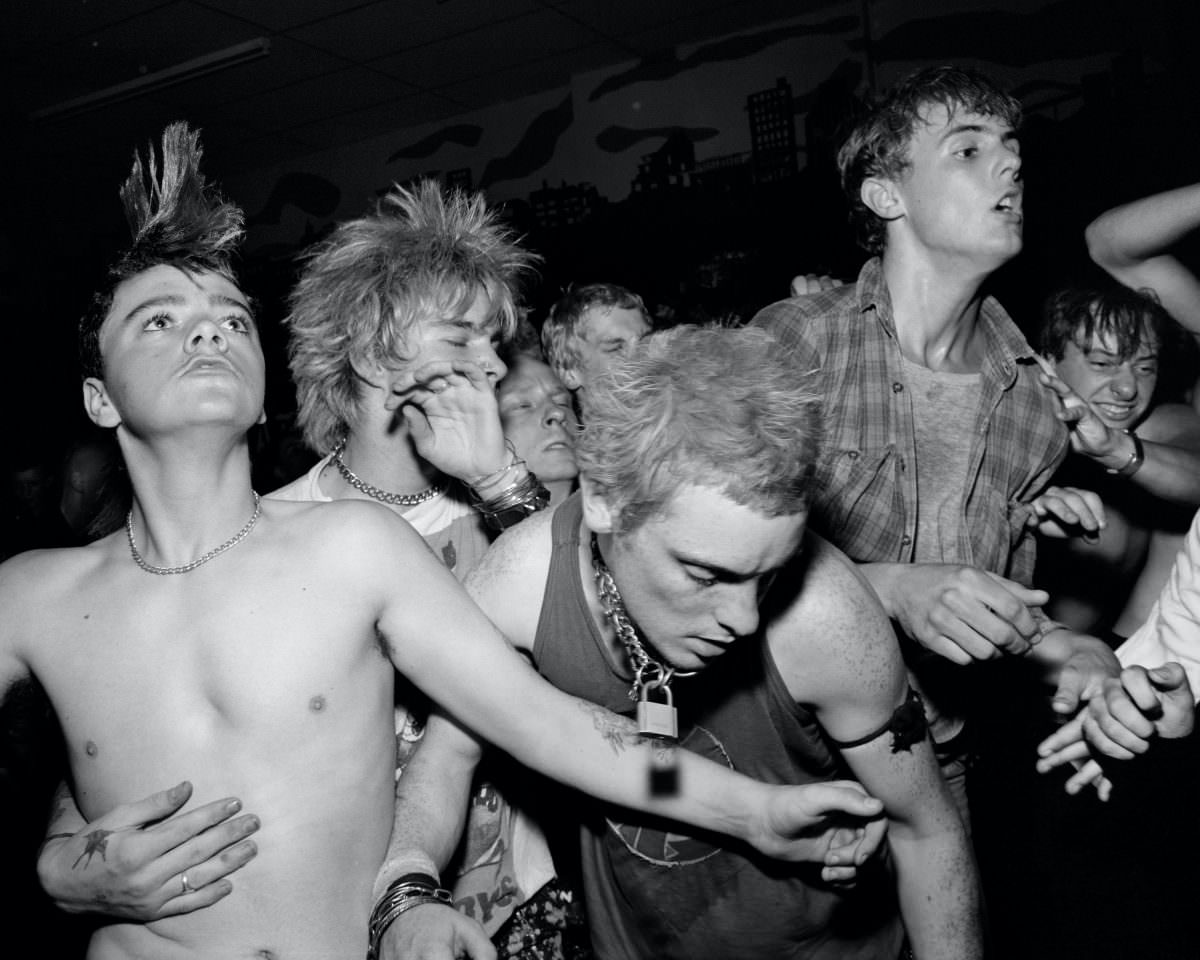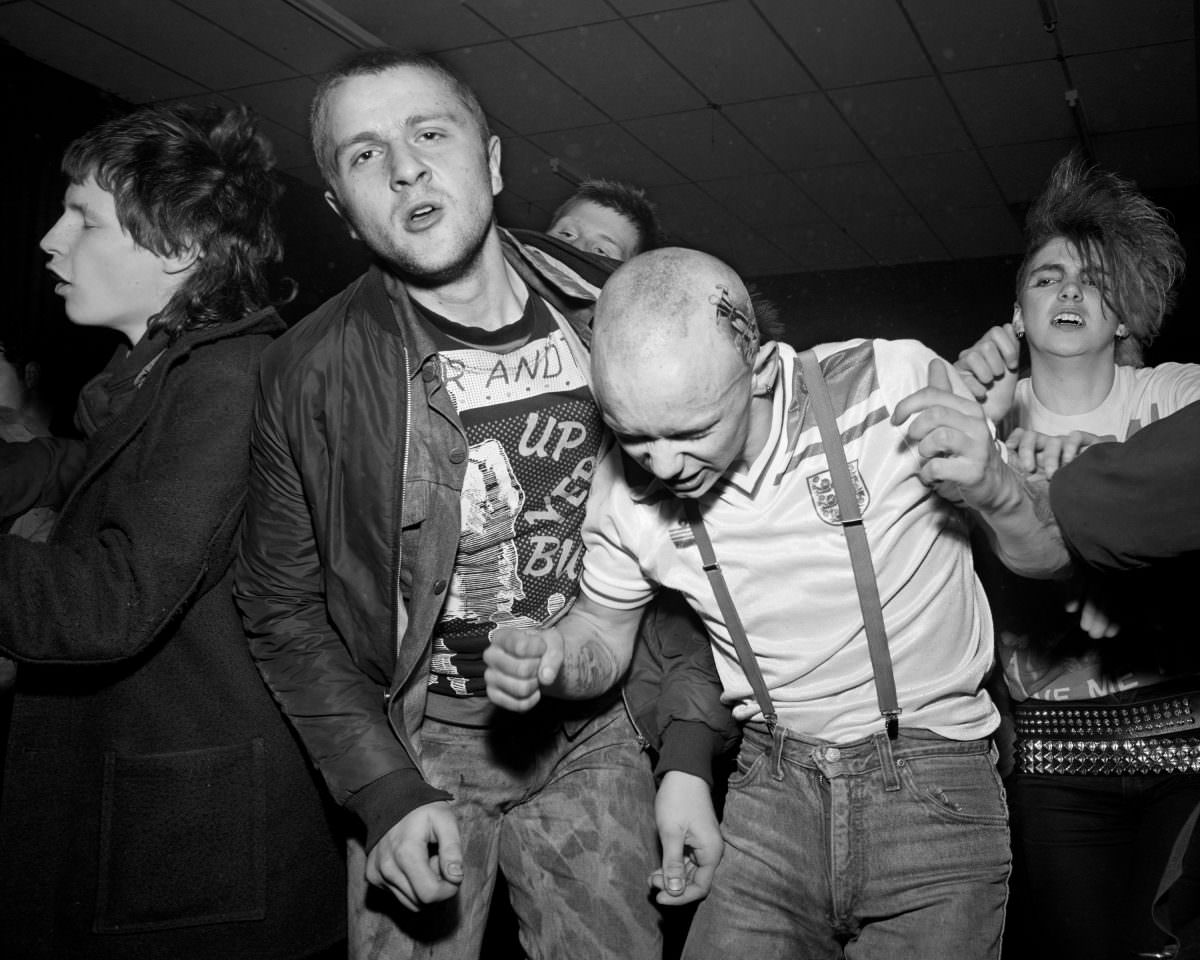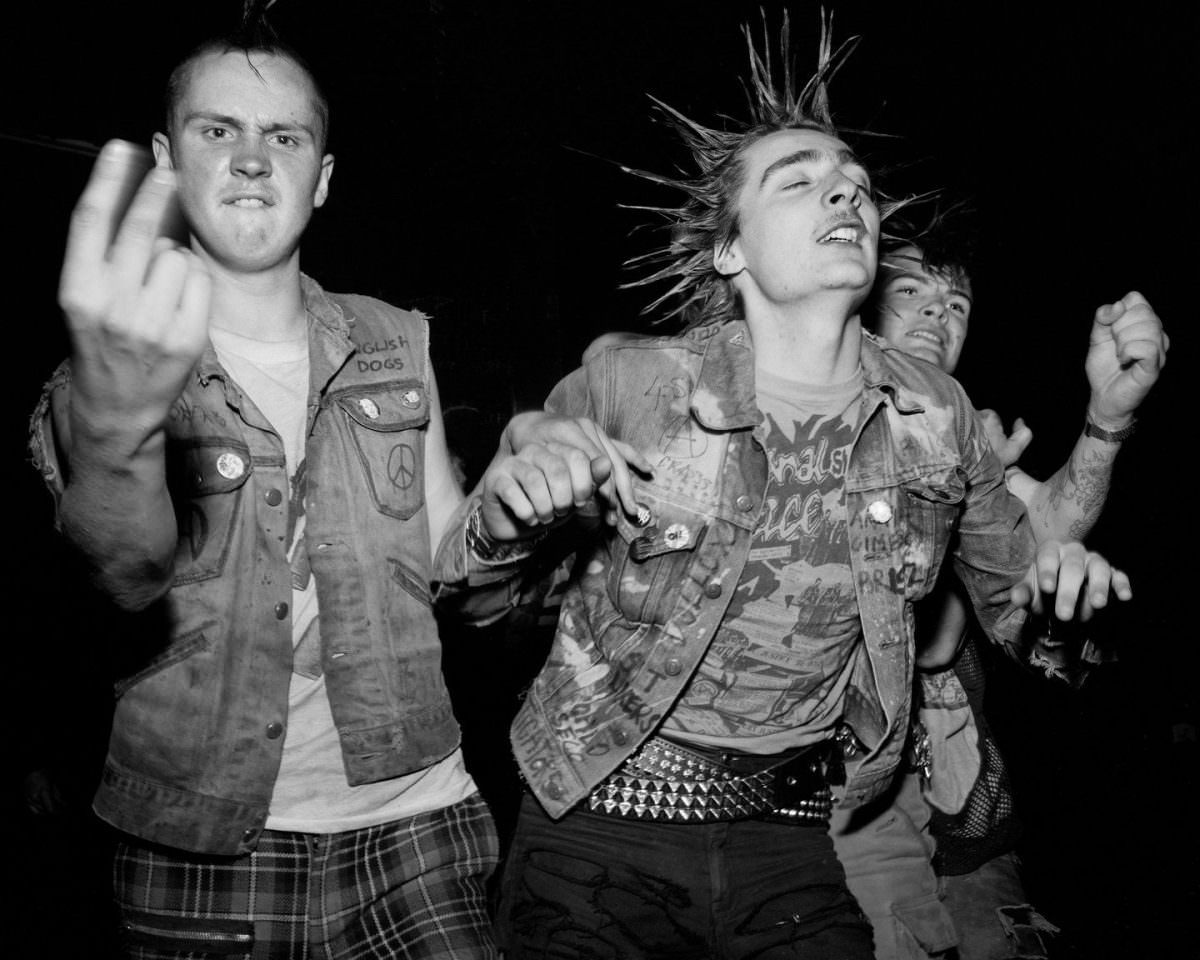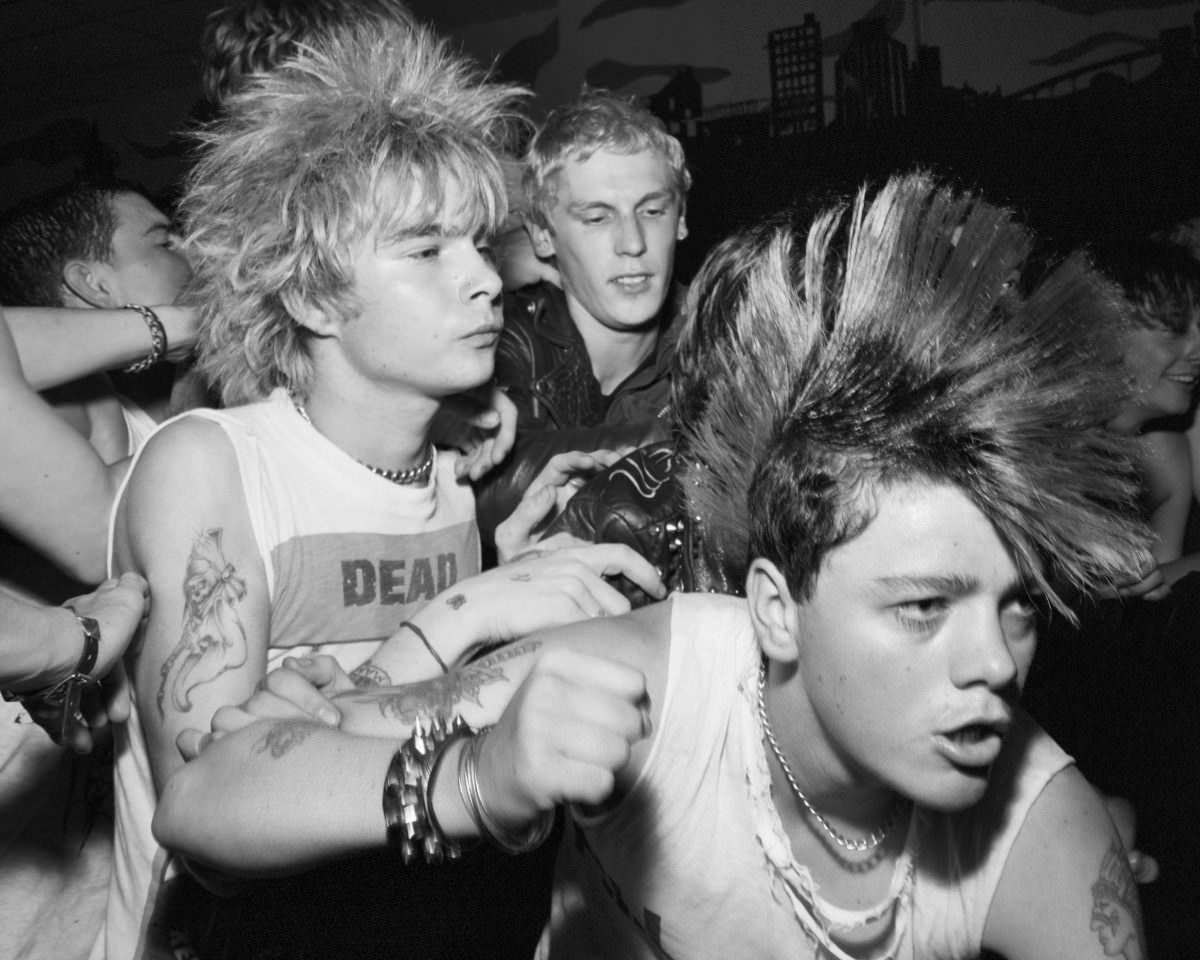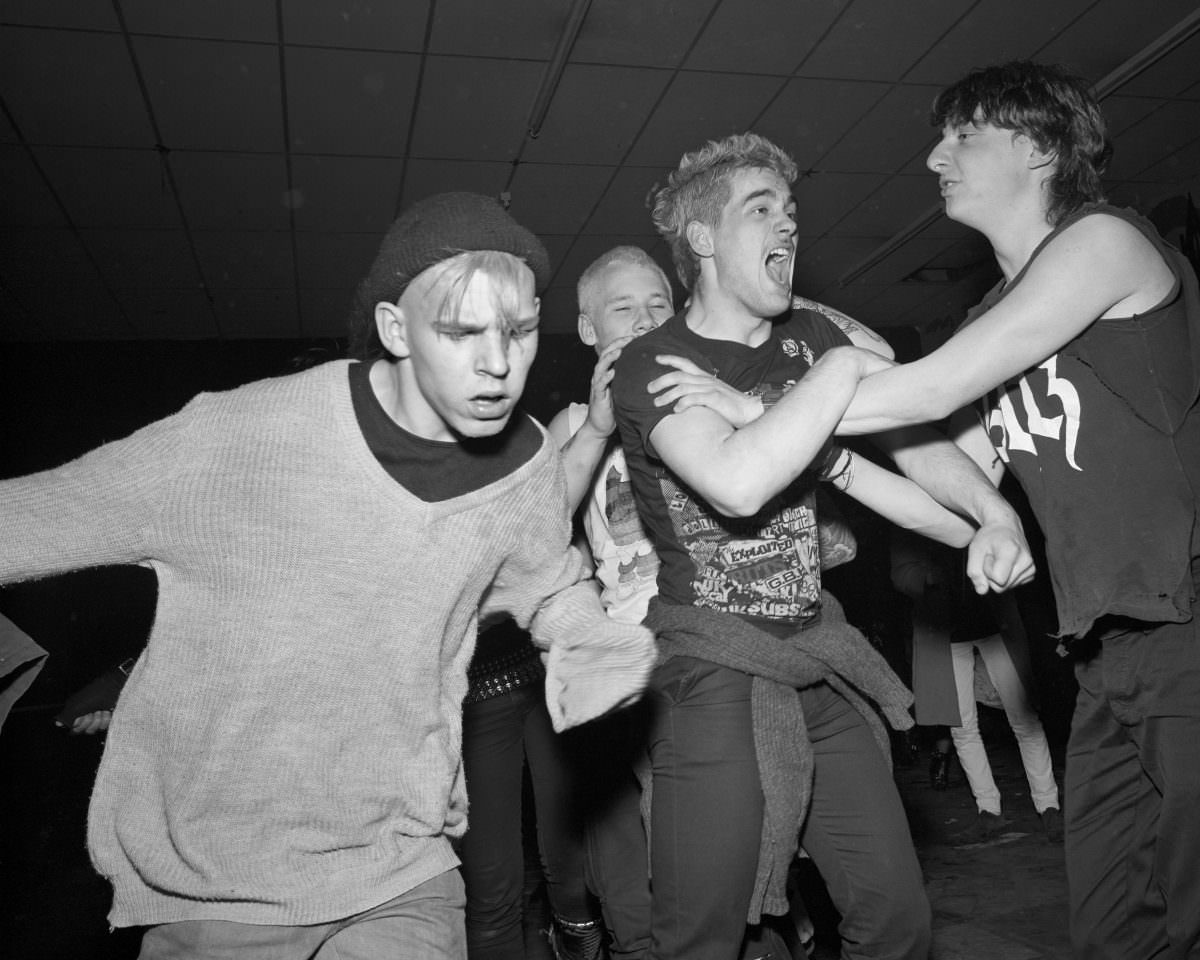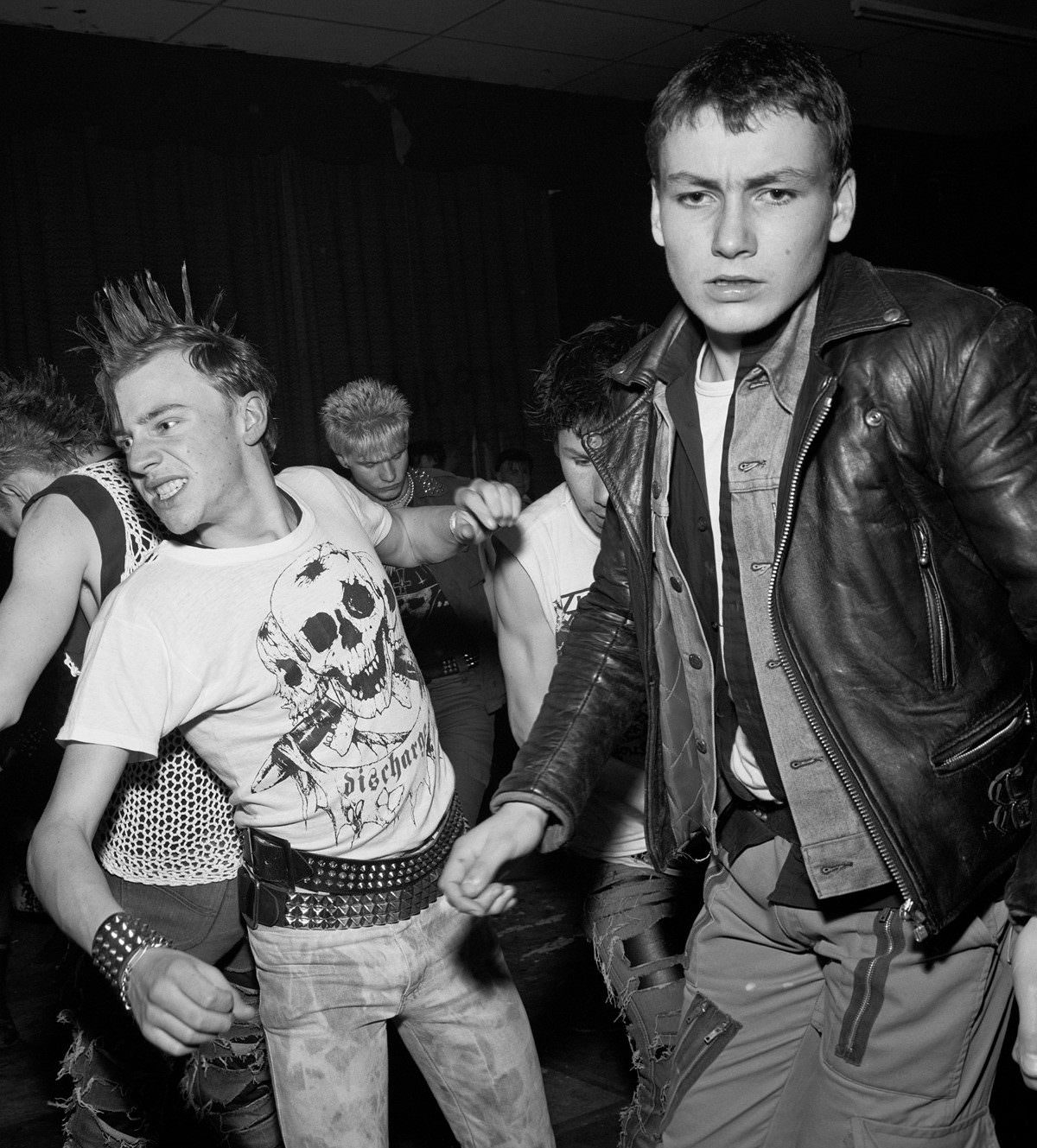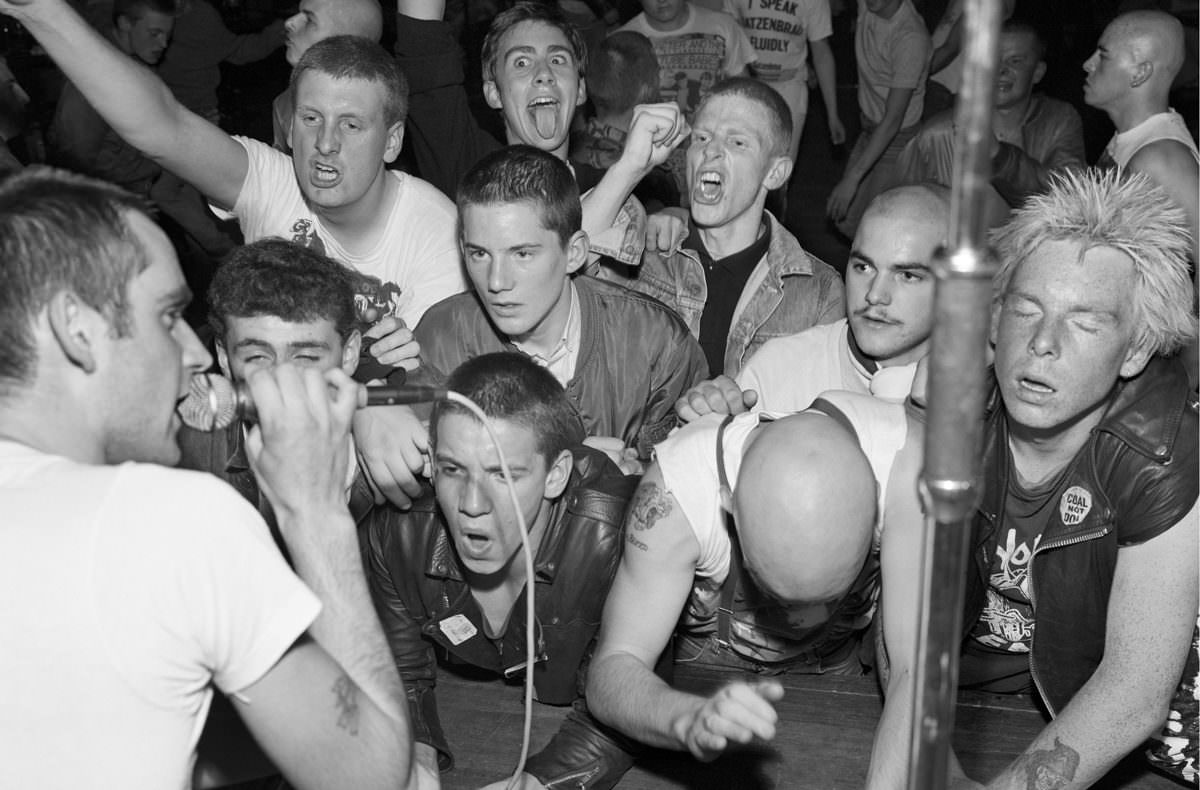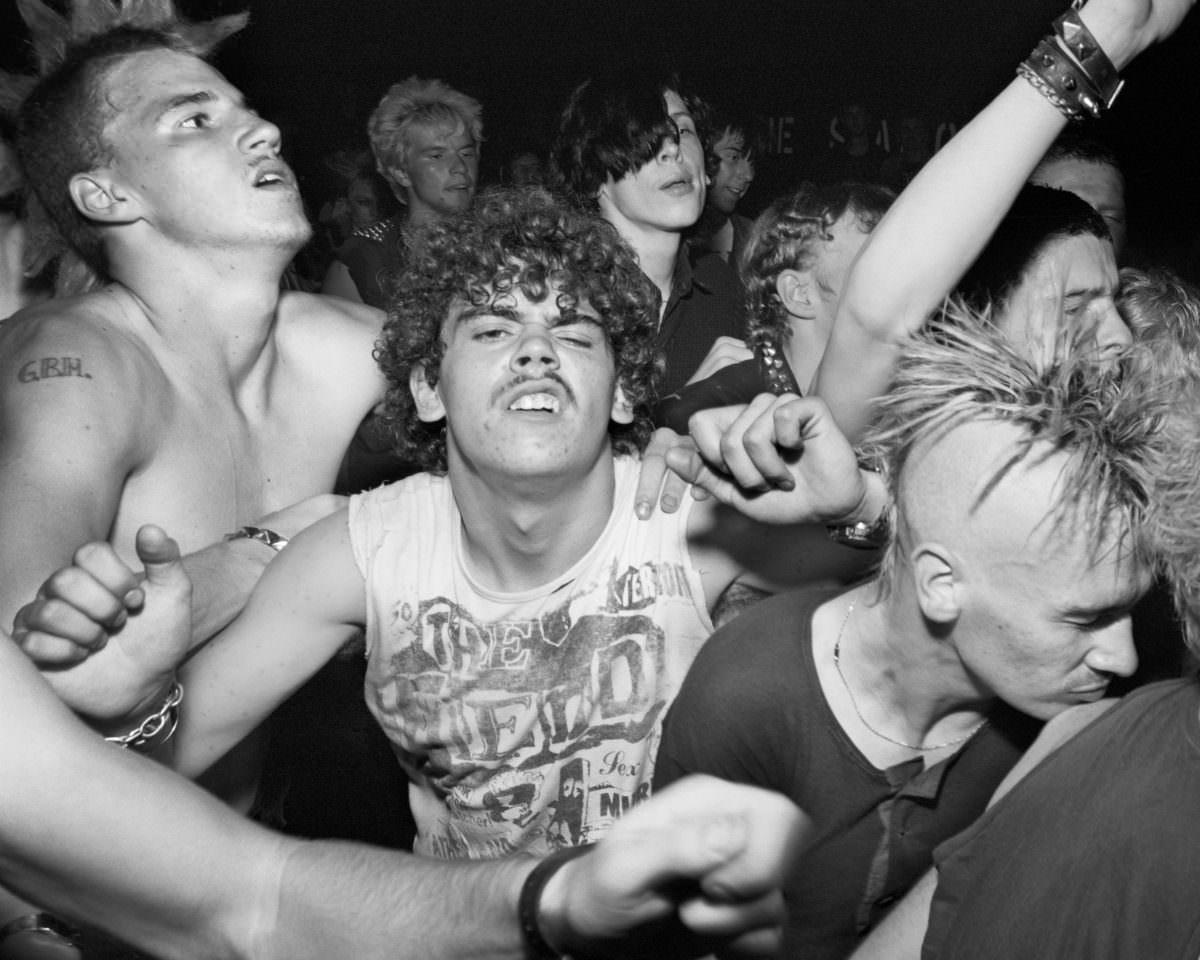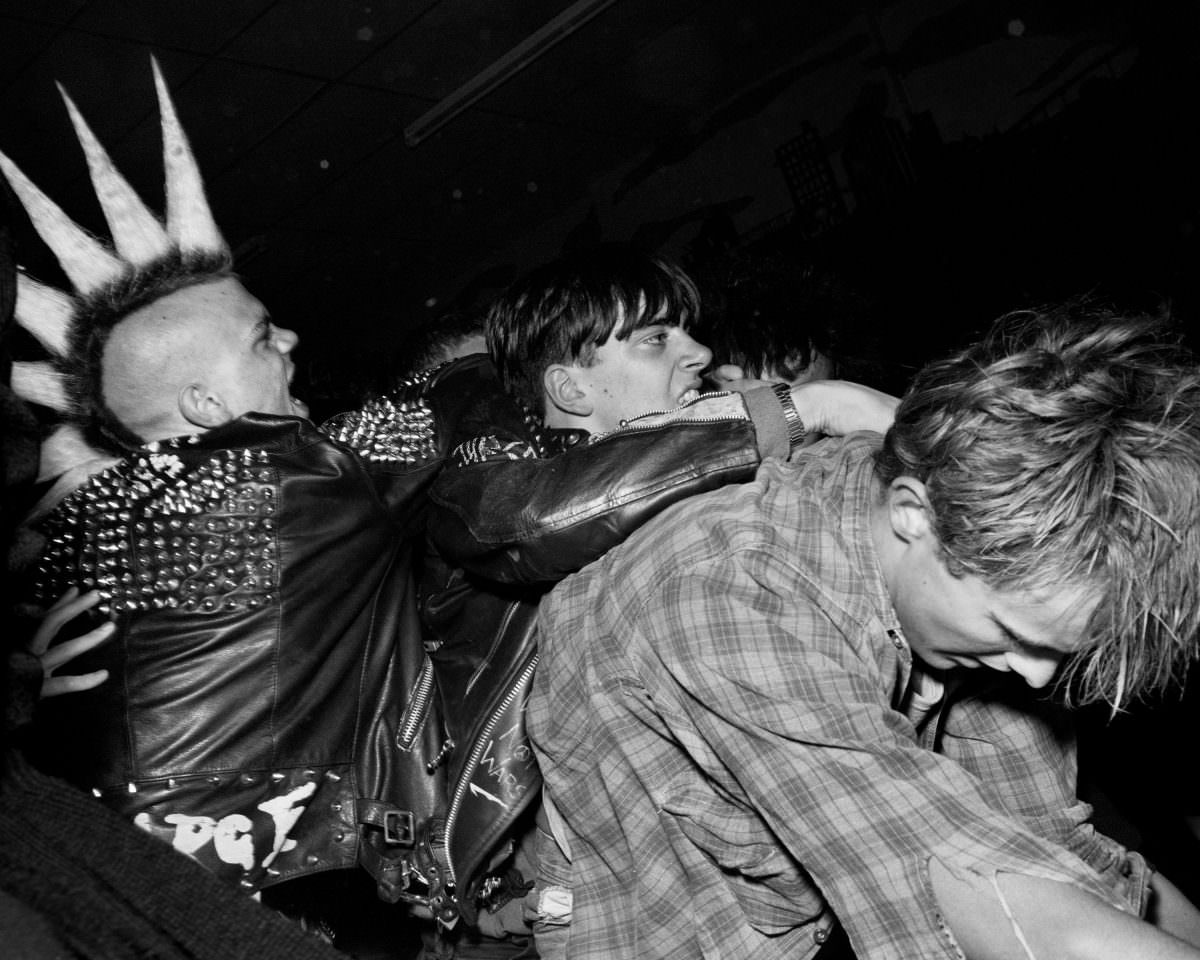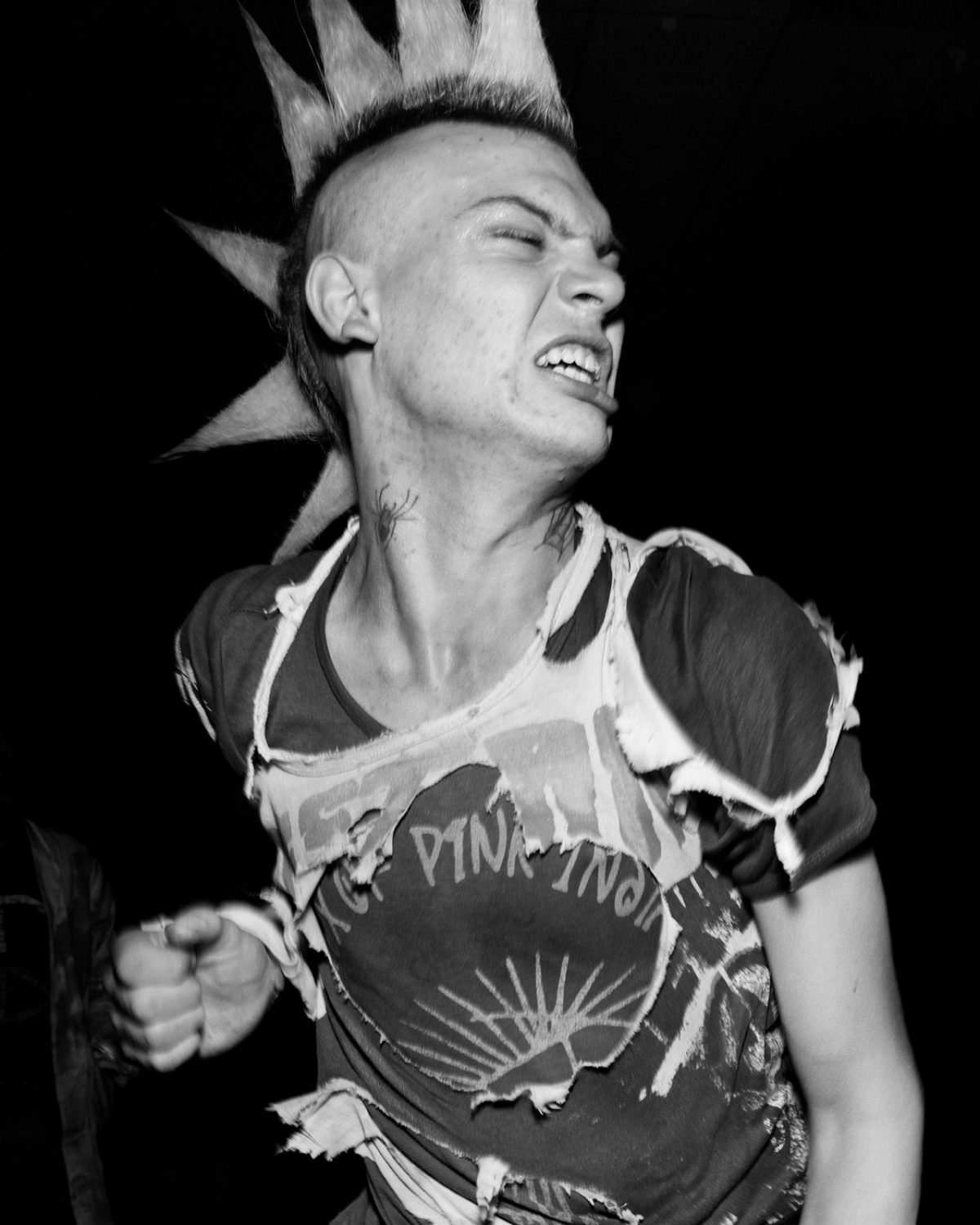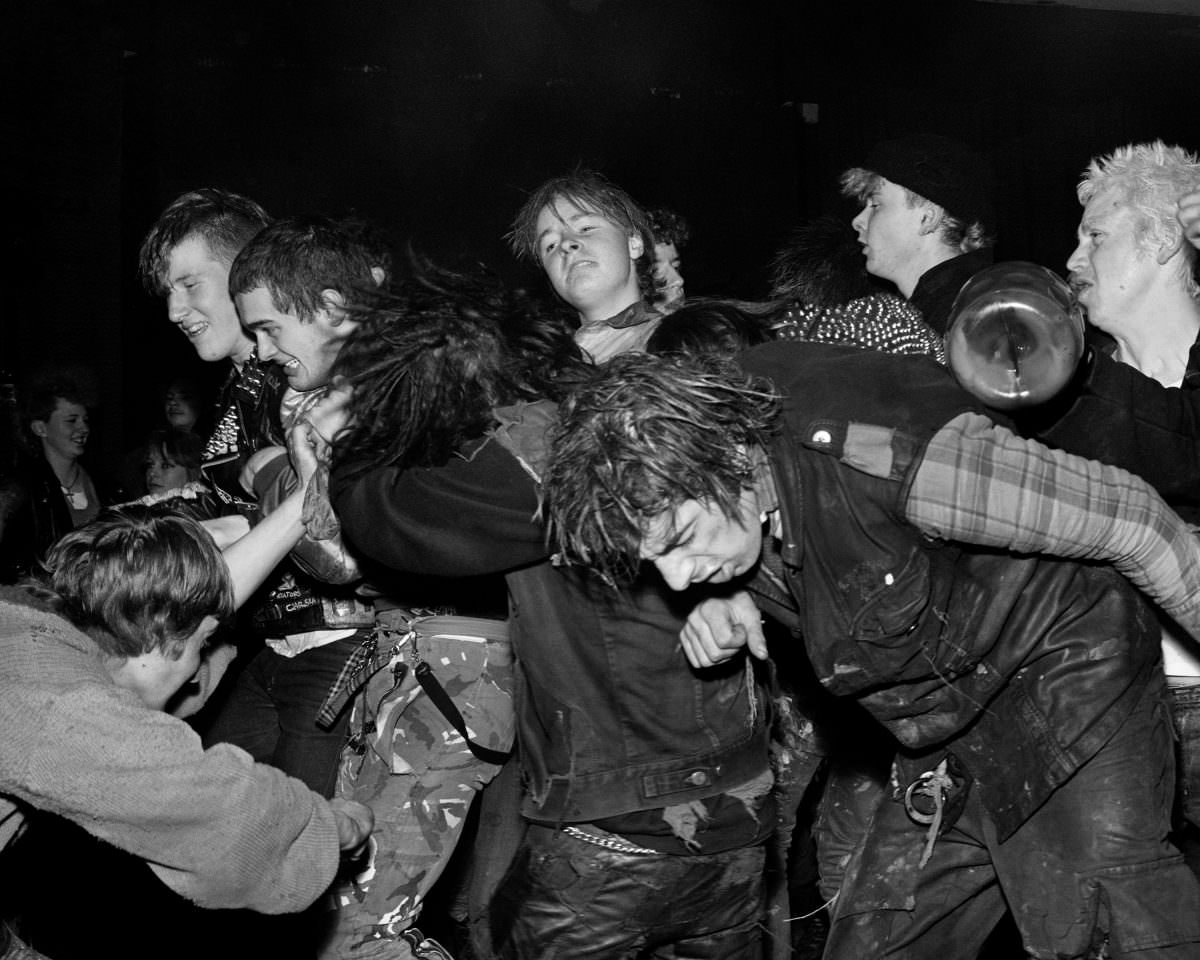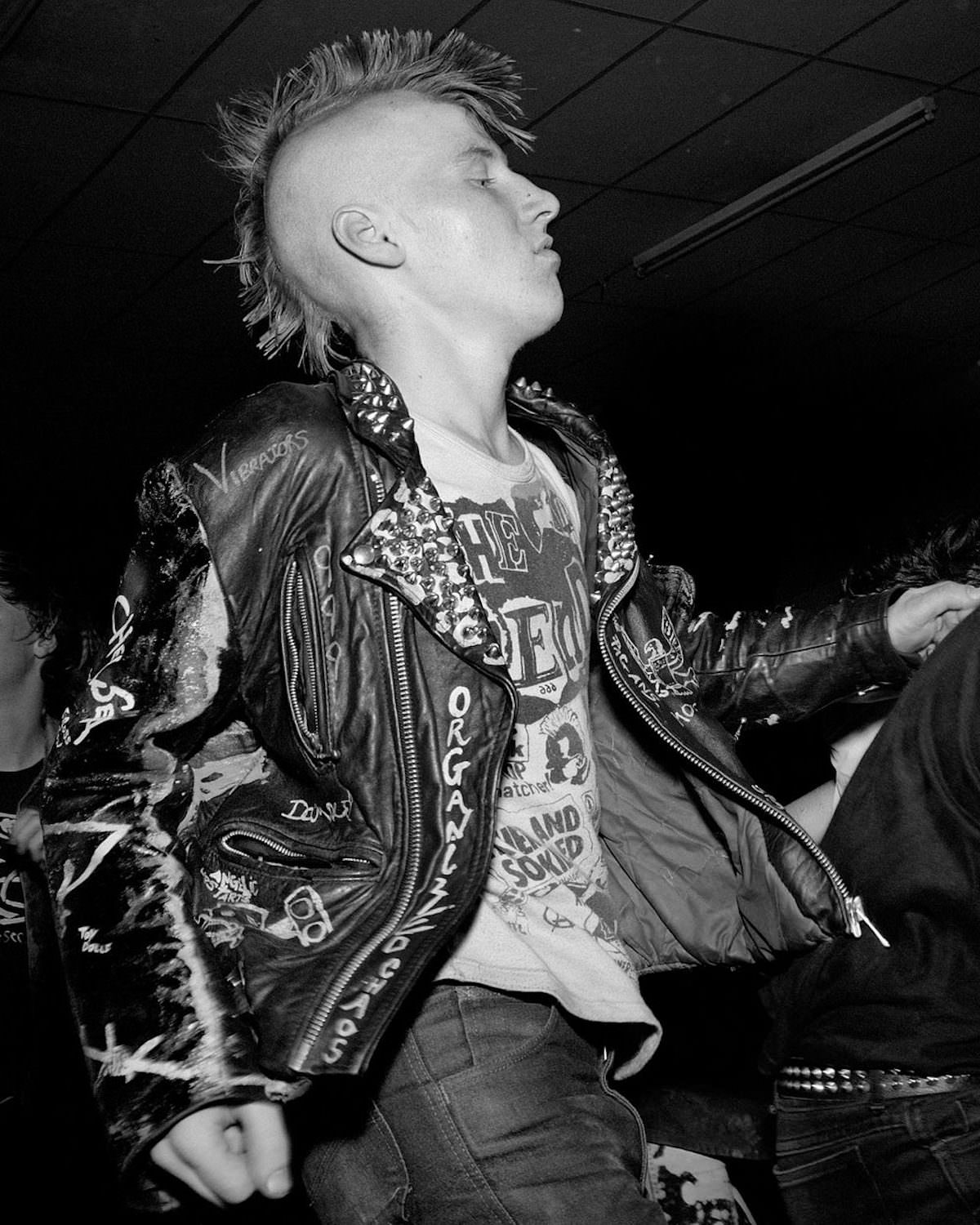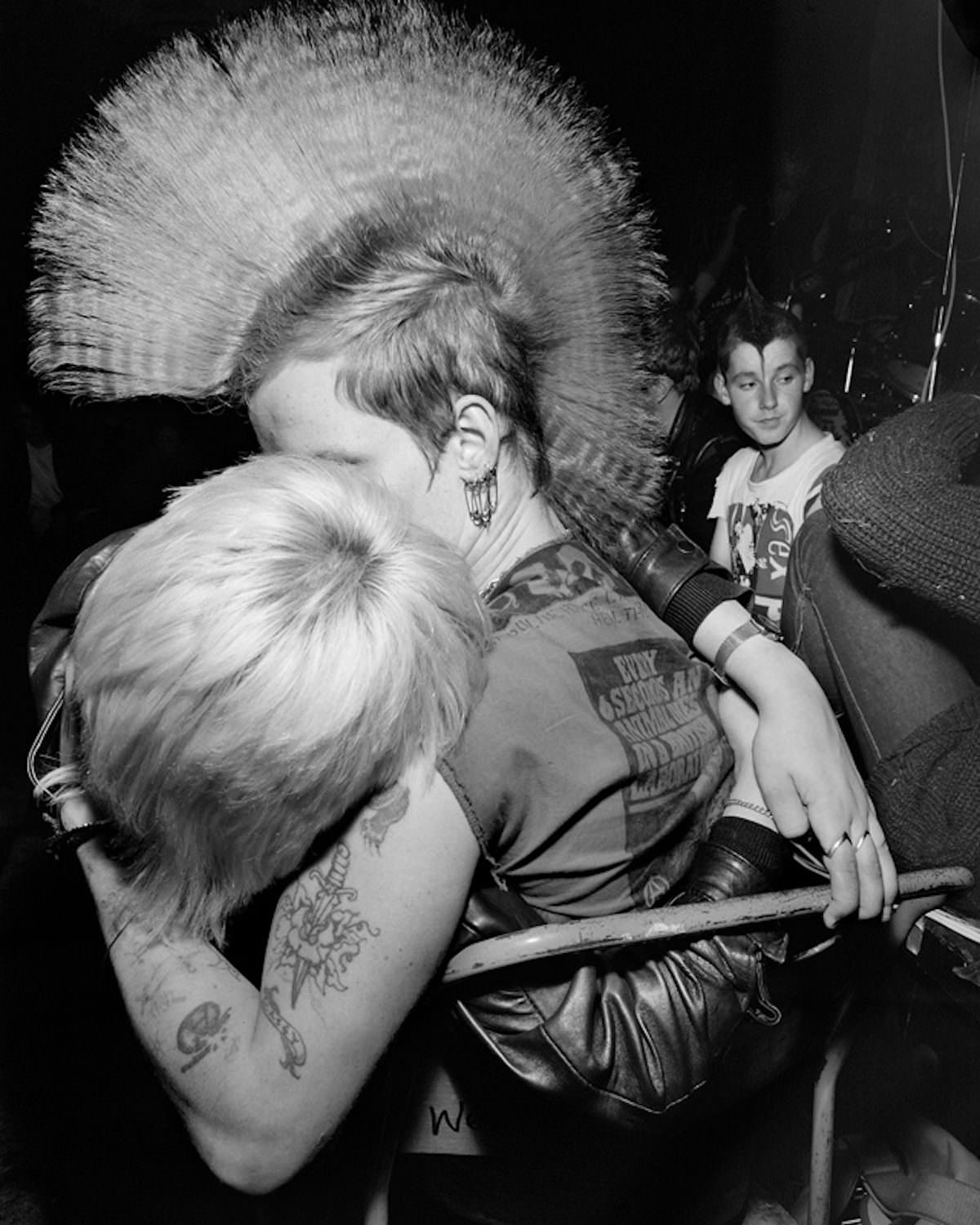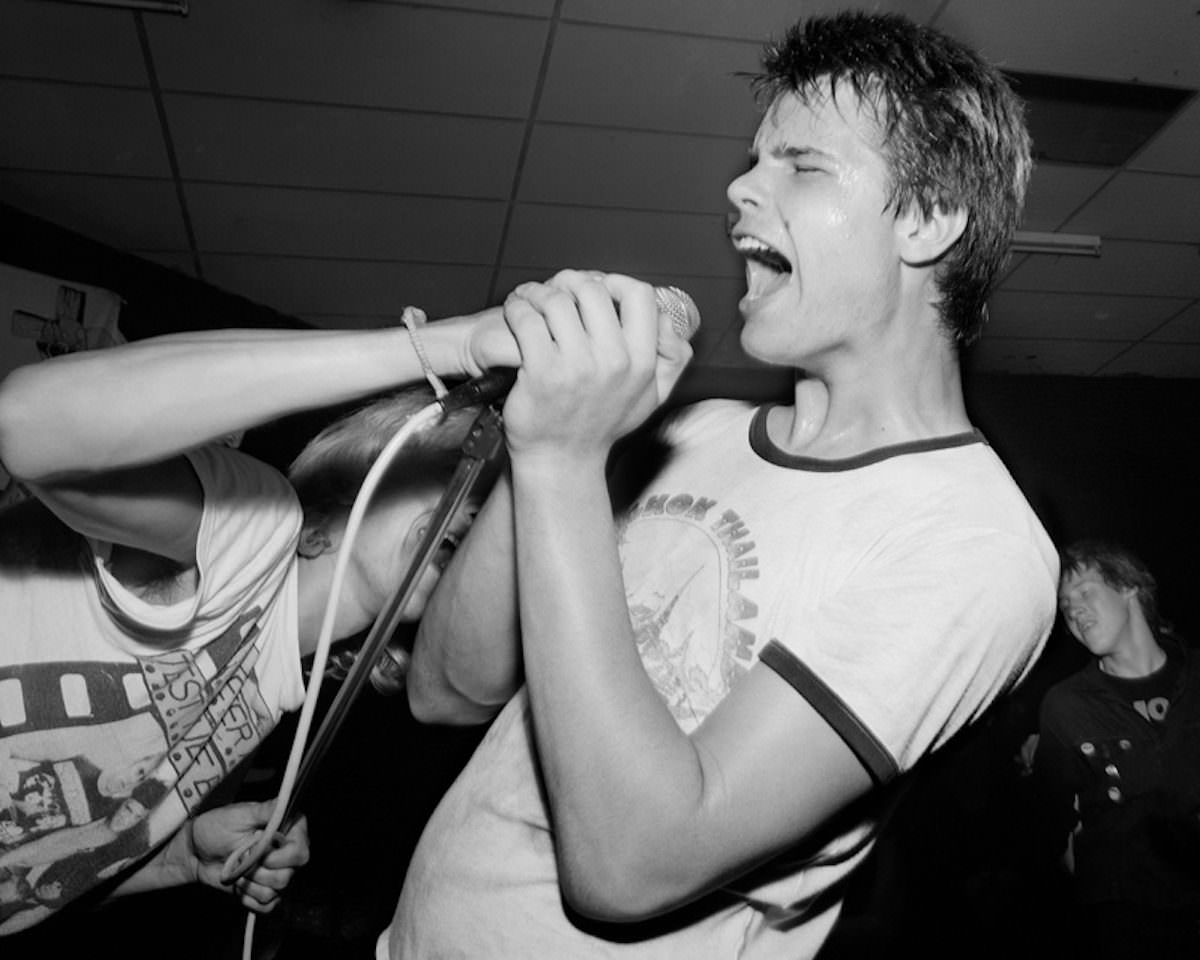Chris Killip, a photographer known for capturing the realities of working-class life, found himself drawn to a vibrant subculture in 1985 Newcastle: the anarcho-punk scene. More than just a music genre, it was a community built on shared experiences and frustrations, a loud rebellion against the bleak backdrop of de-industrialization that gripped Northern England.
Killip’s lens wasn’t focused on the musicians on stage, but on the kids who packed the dance floor at The Station, a unique venue run by the Gateshead Music Cooperative. This wasn’t your typical club; it was a haven, owned and operated by the punks themselves. In a city where unemployment was rampant and opportunities scarce, The Station was a space to let loose, to express anger and frustration through music and movement, to find a sense of belonging.
We see young men and women with brightly colored hair, ripped clothing, and defiant expressions. They’re adorned with piercings and tattoos, symbols of individuality and rebellion against the norms of a society that seemed to have left them behind. The images capture the energy of the mosh pit, a swirling mass of bodies caught in the throes of the music. It’s a scene of chaos and catharsis, a release from the daily struggles of life in a city grappling with economic decline.
Punks embraced a DIY ethos, creating their own spaces and supporting each other in a time of hardship. They organized gigs, produced fanzines, and formed bands, fostering a sense of self-reliance and empowerment. In a world that offered them little, they carved out their own space, building a subculture based on shared values and mutual support.


